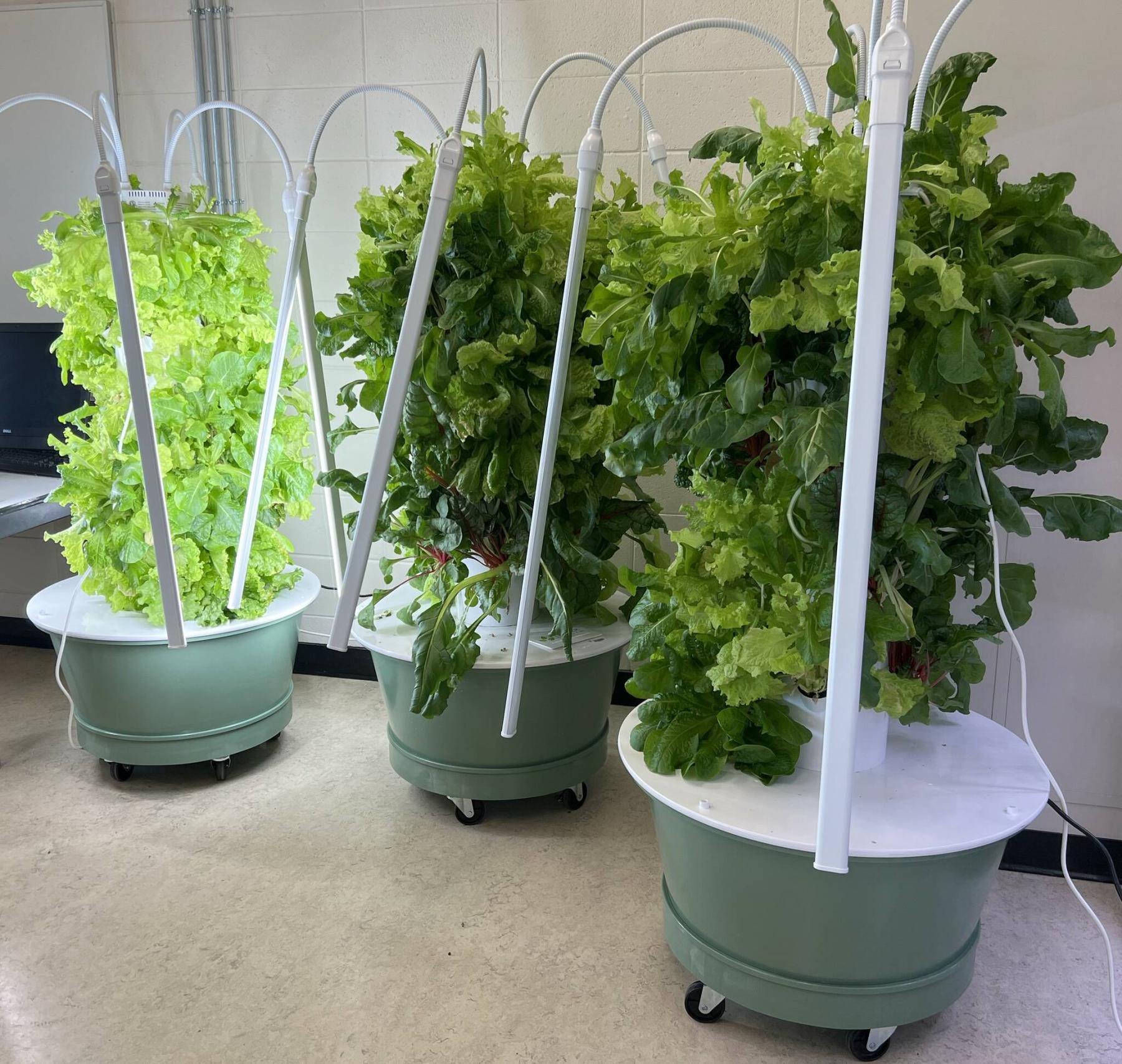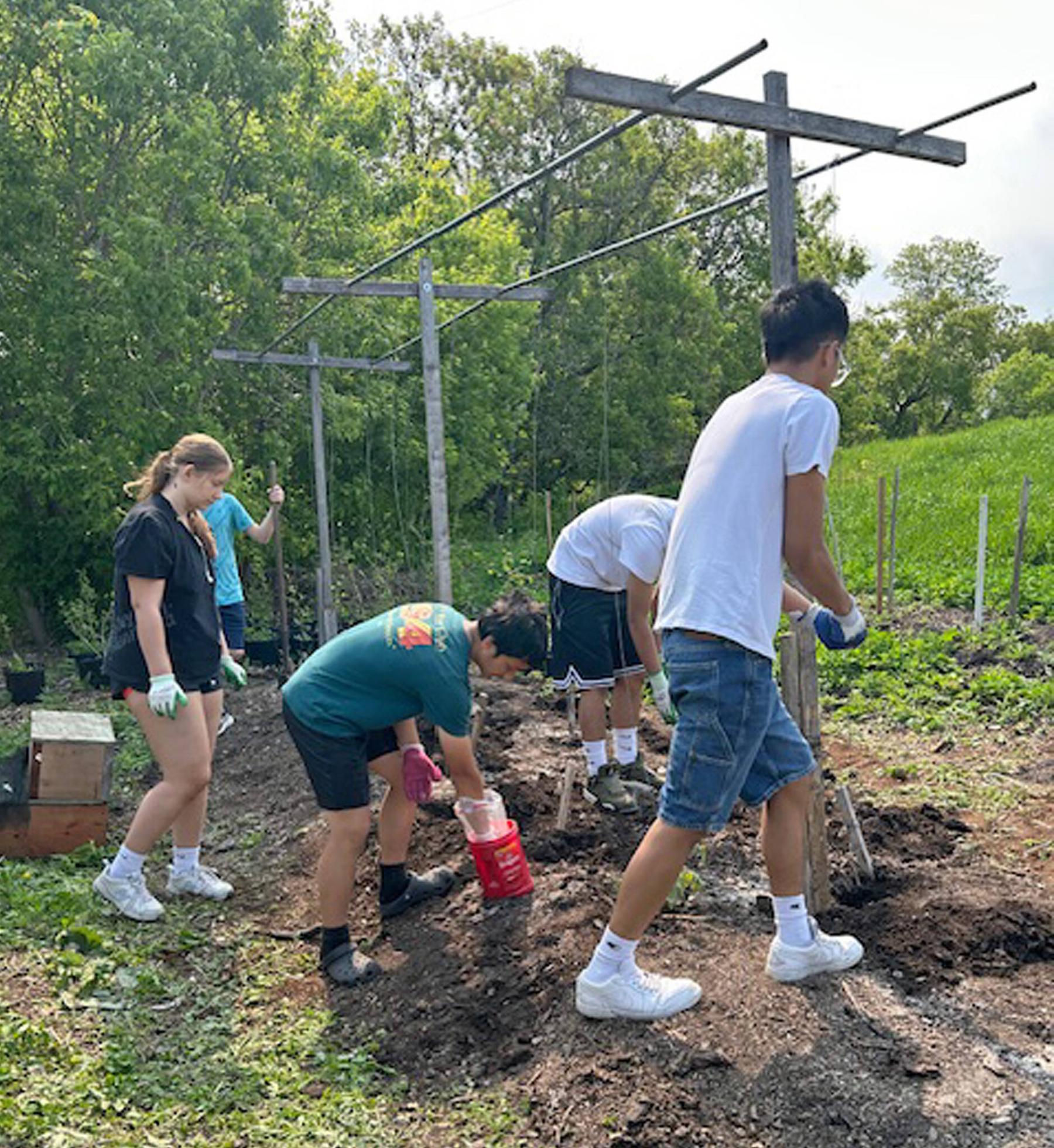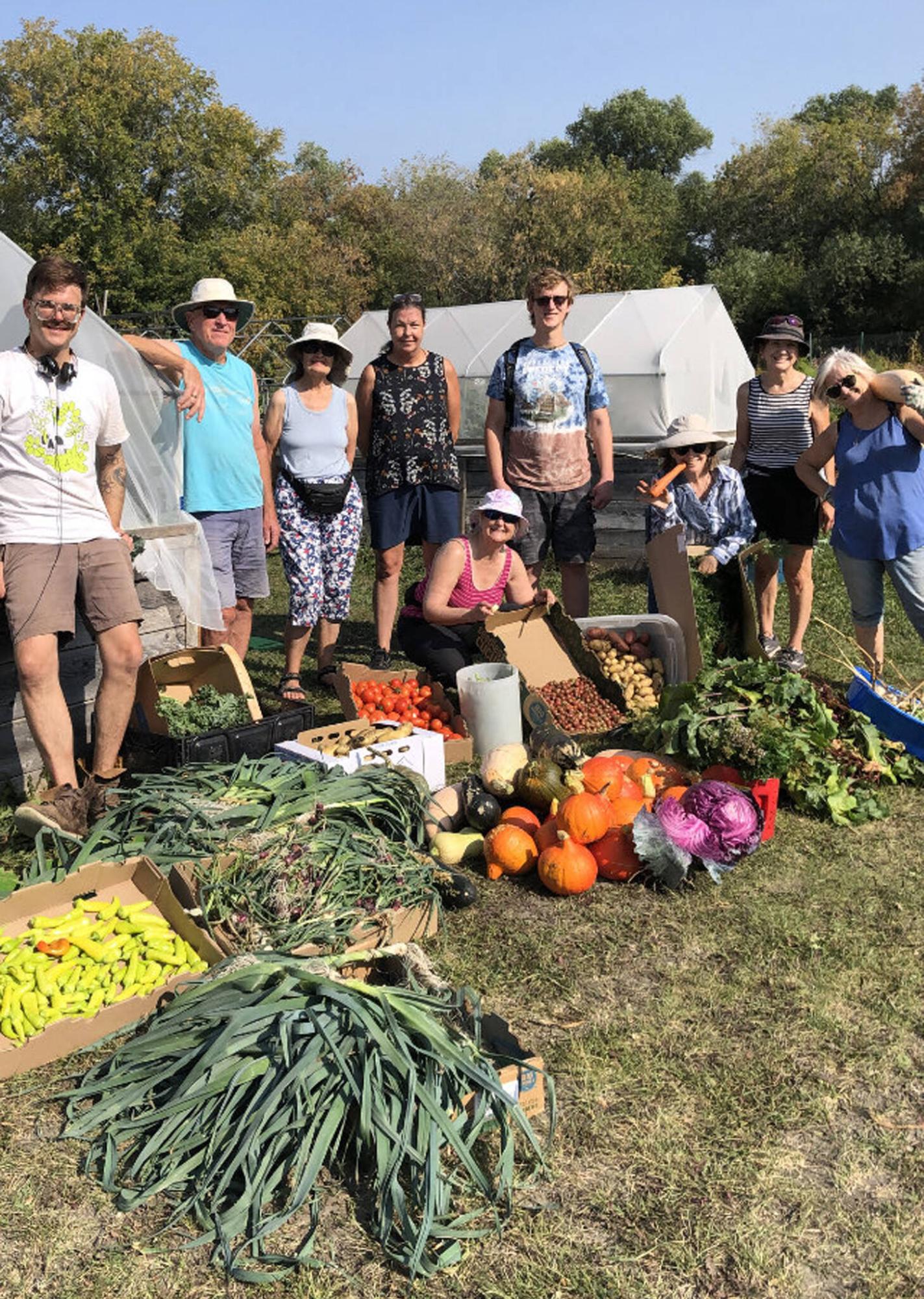
Dylan Rasmussen photo
Churchill High School now has Tower Gardens, an innovative hydroponic growing system.

Barbara Ediger photo
Students in Churchill High School’s new horticultural science program get hands-on experience at Sustainable South Osborne Community Co-op’s garden space.

Barbara Ediger photo
Community organizations like Sustainable South Osborne are excited about the new horticulture program at Churchill High School.
It’s big news when a local high school embraces the study of horticulture and provides the next generation with key skills — not only environmental awareness, but potentially new career opportunities and community engagement.
But in this era of soaring expenses and an acknowledged need to improve economic competitiveness and skills development, how can horticulture not be included in a school’s curriculum?
Horticulture, at its most basic, cultivates self-sufficiency and promotes overall well-being.
When the horticultural science program launched in the second semester at Collège Churchill High School at 510 Hay St. this year, it was the culmination of the dedicated efforts of Dylan Rasmussen, a high school science and biology teacher at the school. The long-awaited development is exciting news to Sustainable South Osborne Community Co-operative (SSOCC), a garden space focused on building resiliency and food security.
The course runs from February to June for eligible students taking Grade 10 science. It gives students a science-based understanding of plant biology, soil science and environmental interactions, as well as practical gardening skills such as seed starting, propagation, pest management and composting.
This spring, I visited Churchill High School and met with Rasmussen and four of his students: Jordan Neil, Danica Chaske, Rylan Peape and James (Jim) Spreitzer.
“What I like most about the program,” said Jim Spreitzer, “is that it is very tangible. I get to see the visible results of the effort that goes into caring for plants and working with them.”
Those results are evident the instant you step into the plant lab at Churchill High. Hundreds of plant seedlings started by students line windowsills and countertops. One of the walls is lined with plant-filled greenhouse cabinets that the students built themselves. There are also three Tower Gardens, an innovative vertical hydroponic growing system that was brimming with fresh rainbow chard, kale and an assortment of gourmet lettuces.
“We harvest the fresh greens for our school’s lunch program, so the food is going back into the school,” Rasmussen explained.
The more than 800 potted seedlings — including tomatoes, peppers, Brussels sprouts, onions and leeks — are destined for the food gardens at SSOCC. The tomatoes have already been transplanted.
“I love the hands-on aspect,” said student Jordan Neil. “People in the school get to take whatever fresh produce is available and I like to see that. The sustainability part is pretty cool.”
Danica Chaske said the course has already made her more mindful of what’s involved in growing food. “I think what makes the class special, too, is that it teaches us things that no other class teaches us — for example, nutrition awareness.”
Rasmussen has obtained a $1,200 grant that will go towards purchasing plants. “We are going to rejuvenate the school’s courtyard. It will be a native plant species project. The students will do all the work.”
“One of the things that I think will really boost interest in the horticulture program is when other students in the school see the work that we are doing,” said Rylan Peape.
A live plant wall frame was recently donated to the school and there are plans to create a living wall project, said Rasmussen. The students also held an in-school plant sale this spring where they sold sunflowers that they grew. Marigold seedlings were also presented as gifts to teachers along with growing instructions.
“The idea was to show gratitude,” said Rasmussen. “The support for the program within the Winnipeg School Division, as well as in the community, has been tremendous. We’ve been really fortunate. This program would not have been possible without the support of Georgia Wells, principal of Churchill High School.”
Rasmussen is also grateful for the mentorship provided by Louise Shachtay, who teaches horticulture at R.B. Russell Collegiate, and Robbin Fontaine, who teaches horticulture at Grant Park High School.
“The community partnership with SSOCC has been amazing,” said Rasmussen.
Recently, students helped plant Saskatoon bushes on the south side of one of the orchards at SSOCC, which maintains a large food forest at 250 Churchill Drive. On May 27, students transplanted the tomato seedlings they had started earlier this spring.
The partnership is a unique opportunity for both students and SSOCC.
“We have wanted this connection with Churchill High School since the beginning of SSOCC,” said Barbara Ediger, a garden steward with the group. “Things have come full circle.”
Ediger used to work at Churchill High and was involved with the garden club that existed at the time. Now there are opportunities for collaborative projects.
“We plan to do some worm composting with the students at the school,” said Ediger. “We are also hoping to raise some butterflies and praying mantis, possibly. The one thing I stress with the kids is that with gardening, you are always learning.”
Churchill High’s new horticultural science program could very well inspire careers in horticulture. That’s positive news for Manitoba’s horticulture industry, said Jeff Southam, president of the Manitoba Nursery Landscape Association (MBNLA). Commercial greenhouse production combined with the production of ornamental nursery crops and sod contribute more than $100 million annually to Manitoba’s economy. The MBNLA is exploring options for a summer job-placement program for high school students in grades 10, 11 and 12, which would give them entry-level work experience in landscape horticulture.
Guy Dowhy, a teacher in the landscape horticulturist program at Red River College Polytech, is also excited about the new program at Churchill High School. In April, RRC Polytech hosted a Skills Manitoba Landscape Gardening competition and invited high school tour groups to see its greenhouse, green wall project and green roof display.
“This is exactly how we try to connect high school students with our profession,” said Dowhy.
Gardening opens doors for everyone, said Rasmussen. “Gardening can lead to an interest in science, it teaches hands-on practical skills and it fosters social and emotional learning. There are an infinite number of directions in which it can take you.
“Basically, in our world we are facing very complex educational problems,” Rasmussen said. “We require complex, flexible methods. Gardening is a powerful tool to bring science alive. I see this program as a dialogue between students, soil, data, story, curriculum and community.”




